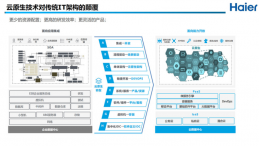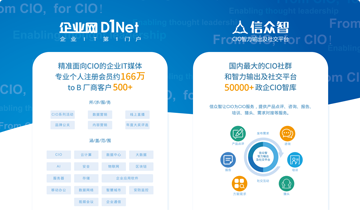By Tim Greene
For Avaya, 2009 could
solidify the company's
top spot on the unified
communications sales
charts, putting it in
the best position to
reap even more as the
world economy improves
in the years following, industry experts say.
In its favor are that the company is privately held, has been at work
streamlining and has installed key executives to carry out well-formed
plans. The downside is that it faces formidable competitors --
Alcatel-Lucent, Cisco, Nortel, Siemens, IBM, Microsoft -- that are
equally hungry and have different pedigrees that may give them an edge.
"'09 will be about being able to build innovation through a
systems-like approach," says Zeus Kerravala, an analyst with Yankee
Group. "There are two things that companies can thrive at, one is
operational excellence and one is innovation. If you're going to be a
market leader, you have to do both well. Quite frankly, [Avaya] did
neither well for a long time."
Unified communications is still catching on, so vendors' positions are
in flux. Plus, with a global recession taking hold, vendors will be
challenged financially, and that could alter their relative success,
experts say. The entire UC market for Q3 2008 was $3.1 billion as
calculated by Dell'Oro Group. Avaya led the pack with 22% of that
market, followed by Cisco with 18%, then Nortel with 11%. Two big
names in unified communications -- Microsoft and IBM -- weighed in
with 2.5% and .6%, respectively.
Avaya has led the field since 2007 when Dell'Oro started tracking UC,
and it has made dramatic changes since then.
The company started down a new path under CEO Lou D'Ambrosio, who
oversaw Avaya's purchase by Silver Lake Partners in 2007 and who
charted a course to overhaul it. The plan called for doing better by
being more efficient internally, shifting toward indirect sales, and
focusing more on software and less on hardware.
Execution of that plan has continued under interim CEO Charles
Giancarlo, who replaced D'Ambrosio when he resigned for health reasons
in June 2008. A permanent replacement, Kevin Kennedy, takes over in
January.
Avaya's apparent lead in UC, however, is not as distinct as it might
be, says Alan Weckel, a Dell'Oro analyst. It's difficult to define UC,
therefore difficult to say who sells the most and therefore leads.
It's not like counting the number of firewall appliances bought or
the number of seats of software.[NextPage]
"There are no UC metrics
for units sold," Weckel
says. "A lot of UC
sales today are still a
PBX and IP phones," so
that hurts Microsoft
and IBM in the rankings.
"They play in the
application space, but
not phones or PBXs."
Nevertheless, Avaya is
in a solid position for
several reasons. It is
privately held and does not have to answer to the quarterly demands of
Wall Street. It had large cash reserves and is cash-flow positive,
Weckel says.
The company had old-school business processes in place, but now that
it's being taken over by a private firm, Avaya can reorganize around
profitability and even accept smaller margins to boost business
long-term, Weckel says. "It's a transition they needed to go through."
Cisco is the toughest competitor. Its share of the UC market measured
by sales has been growing among enterprise customers, while Avaya is
more stagnant. Cisco ships more VoIP lines, but has an installed base
that pales in comparison to Avaya's, Weckel says. Cisco is doing a good
job shifting from its proprietary protocols to open ones, and from a
hardware focus to software in its VoIP offerings. "Will Avaya be there
in five to seven years? The answer is yes. You can't say that for all
the competition," he says.
That is something Giancarlo agrees with. "There will be fewer vendors,
without a doubt, in this industry several years from now than there are
today," he says.
Notably, Nortel is reported to have hired counsel to advise on whether
bankruptcy is in its best interest. Other vendors -- Weckel would not
specify which -- will suffer lower stock prices and perhaps be absorbed
through mergers.
Avaya's Giancarlo speaks optimistically, however. "While the next several
years are going to be very difficult for everyone, including high tech,
I've been through nuclear winter -- it was 2000 and 2001 -- and I don't
believe that this will be quite as difficult a time for high tech as that
was," he said, addressing a UC conference earlier this year.
On D'Ambrosio's watch, Avaya began focusing more on software and the
potential for applications to make use of underlying UC infrastructure.
To that end, the company established DevConnect, an application-developer
community open to customers as well as independent software vendors.
"I think the DevConnect program is key to the business to help make that
transition to software by adding a lot of [independent software vendor]
partners,” Kerravala says. "They'll be able to take advantage of the
software platform they've created."
Microsoft, however, with its software predominance, stable of ISVs and a
UC platform of its own, poses a significant challenge, Kerravala says.
"Microsoft's product isn't mature enough that it's mattered up until
now," he says. "Ultimately Avaya has to understand that Microsoft's
going to be there, and how do you leverage that fact?"
Microsoft already collaborates with Avaya on UC integration, but also
with Avaya's competitors, so there is no distinct advantage there,
Kerravala says.
The answer, Kerravala says, is to find a way to complement Microsoft
infrastructure. "Avaya's got to find a way to be almost like Citrix
Systems is to Microsoft," he says. "Citrix, you could argue, competes
with Microsoft, but ultimately they sit on the Microsoft infrastructure
and make it better. They add value."
"Can Avaya find a way to let Microsoft do what Microsoft does, and then
sit on top of the Microsoft infrastructure and add functionality to it?"
Kerravala asks.
A hint about what Avaya might do comes from Giancarlo. UC vendors as a
whole have failed to follow the ease-of-use and content-rich model
adopted by cell phone makers, he says. UC software needs to include
standard applications, such as Rolodexes and address books that get
used every day.
Also, UC client software must be portable to whatever device the customer
wants to use, including cell phones, handhelds, laptops, desktops and
kiosks "so that as we update and improve the endpoint software with new
features and capabilities, that improvement is able to appear everywhere
our customers may have employed a new endpoint or a new system,"
Giancarlo says.
UC software must be open, so it can be readily integrated into enteprise
applications, Giancarlo says. "As an industry we've set an extraordinarily
low bar so there's a great opportunity to improve upon that," he says.
That fits with Kerraval










































































































 京公網安備 11010502049343號
京公網安備 11010502049343號